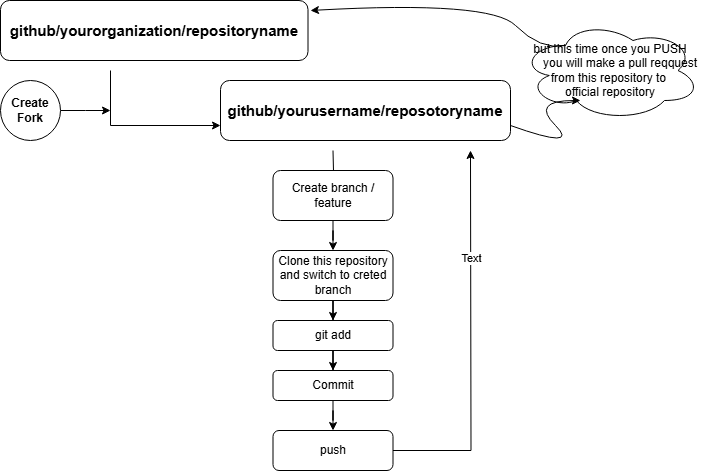Git Clone :
- Clone is to create a local copy of repository.
- On the other hand,
git cloneis used to download a repository (forked or original) to your local development machine. This is what actually gives you the codebase to work with.
Git fork :
- creates a copy of a repository on your GitHub (or GitLab, etc.) account, letting you propose changes without write access to the original repo.
- When you fork a repository on GitHub, you’re telling the platform:
“I want a separate version of this repository in my own GitHub account.”
- This is especially useful for contributing to open-source and team projects where you don’t have direct write access to the main repository. You fork the repo, make changes in your fork, and then create a pull request to propose those changes to the original project.
Here’s how you’d typically use both:
- Fork the repo on GitHub (creates a copy under your GitHub username).
- Clone your fork locally using:
git clone https://github.com/your-username/the-repo.git
So: Fork = GitHub-level action, Clone = Local machine-level action.
In real time every developer / DevOps engineer will create fork , They will make change on it , They can create branches. Make change in branch , Push the changes to created branch , Then i can create PULL request to official repository.
Eg: github/organizationname/repositoryname

Explain a scenario where you used git fork instead of git clone. Why was forking necessary?
I used git fork when I contributed to a DevOps project in my org on GitHub. Since I didn’t have write access to the original repository, I forked it into my GitHub account, made changes, and then created a pull request from my fork to the upstream repo.
In this scenario, the original repository belonged to an organization. I wanted to fix a bug in their Helm chart setup for Kubernetes deployments. Because I didn’t have contributor rights to push directly, I used the Fork button on GitHub to create a personal copy of the repository under my own GitHub username.
From there:
- I cloned my fork to my local system:
git clone https://github.com/my-username/devops-helm-project.git - Created a new branch, made the fix, committed the changes.
- Pushed the branch to my fork:
git push origin bugfix-helm-values - Finally, I submitted a pull request to the original repository.
Using git clone directly on the upstream repo wouldn’t have helped because I couldn’t push changes or open a PR without a fork. So, forking gave me independence and write access on my own terms, while still contributing back to
